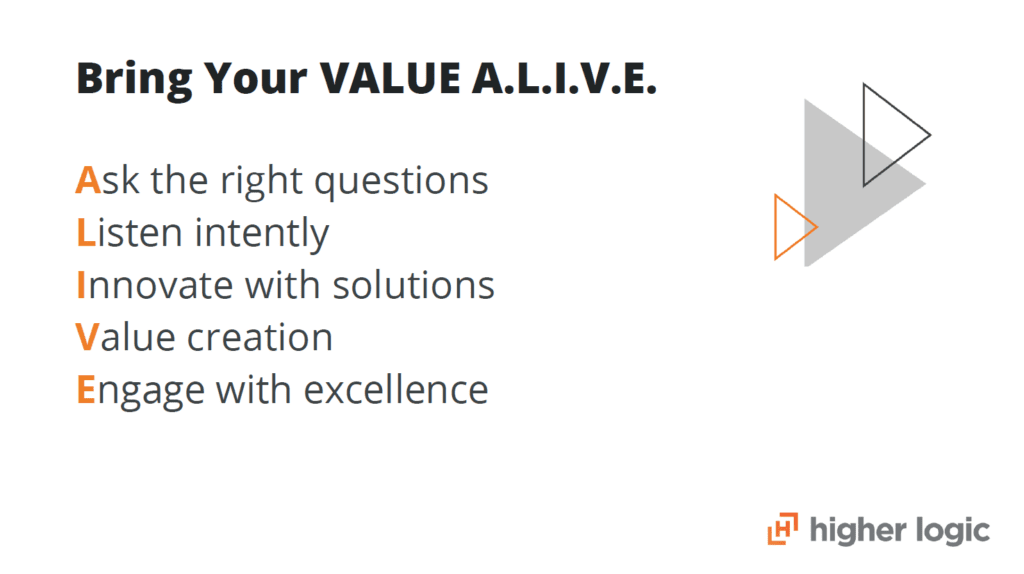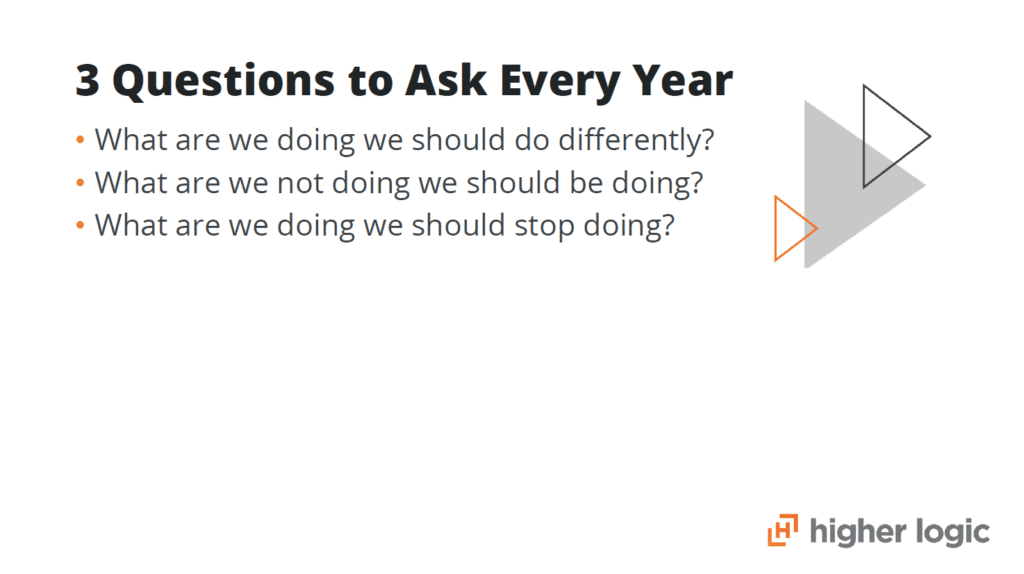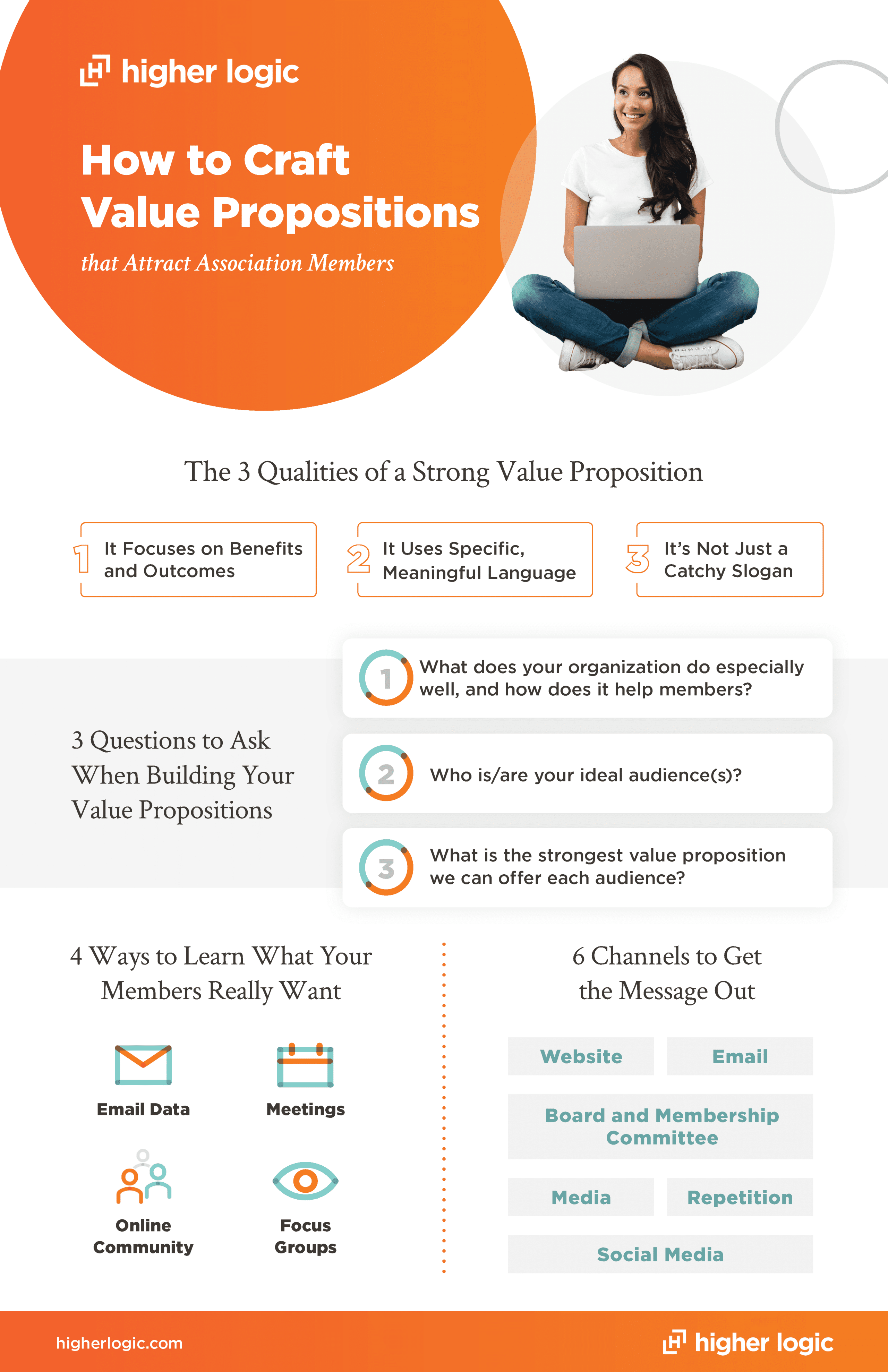
Defining the Value in Your Association’s Value Proposition
Your association’s value proposition should be the core of the member benefits you provide and guide how you communicate with members and future members.
The recent 2021 Membership Marketing Benchmarking Report from Marketing General, Inc. included responses from associations on how compelling they believe their value proposition is to members. What did people say?
- 13% believe their value proposition is very compelling
- 39% believe it’s compelling
- 40% believe it’s somewhat compelling
- 7% believe it’s not very compelling
- <1% believe it’s not at all compelling
So about half of these respondents think their value propositions are compelling. What about you? Where would you rank your own association’s value proposition?
If you landed anywhere other than the top 13%, I’m glad you’re still reading! Your association’s value proposition should be the core of the member benefits you provide and should guide how you communicate with members and future members. The fact that you’re still reading says you are always looking to improve – the hallmark of a great association.
But how can you improve? Well, in Session #2 of our What’s Next for Associations series, we dug into value propositions: what makes up a good value proposition, how to discover the value your members are looking for, and how to define that value. Tom Morrison, CEO of the Metal Treating Institute, and Dave Will, CEO at PropFuel, joined me live to talk through these ideas, and now we’re sharing them for you here.
Want to listen to the webinar on-demand or join us for Session #3 on doing more with your tech? Learn more here.
Why Re-Examine Your Value Proposition?
To answer this question, we need to start with some of the forces affecting associations and the value you provide.
The first and most apparent is the pandemic, of course. COVID-19 has led to new norms that have or will change what your members need from you. One of the biggest is the need to go digital – what are you offering members to help them connect, access resources, build a network online? Because of the pandemic, your members may also be seeking resources about things like these:
- Health hygiene
- Remote work
- Virtual meetings
- Digital selling tools
- Cybersecurity
Demographics. As demographics shift, you may need to reassess how you’re reaching millennials and Gen Z, since the value they want from you and the way they want you to communicate about it to them may change.
Emerging technologies are another area where you may need to equip members with helpful resources or tools. New tech has a way of disrupting multiple other industries. For example, self-driving cars would likely reduce the number of crashes, so insurance would go down, and paint and body shops would lose business. Self-driving cars might also affect the need for road signs over time. What emerging technologies are poised to affect your industry? How can you keep your members up-to-date and prepared for the changes?
The rate of change in the world today is a good reason to regularly reconsider your value proposition. Are you offering what members want and need, based on these outside forces?
Next, let’s look at some qualities of a good value proposition.
What Comprises an Effective Value Proposition?
When you’re thinking about redefining your value proposition, there are a couple key things to keep in mind.
1) A great value proposition is dynamic. It changes regularly to meet members’ needs. That probably doesn’t mean every month – but it’s worth taking time to review every year and tweak as needed.
2) Your value proposition (and all the member benefits it encompasses) should provide solutions to your members’ biggest pain points.
As Tom said, “That’s what value propositions really do: Solve problems for the largest pain points. Because guess what? If you solve those problems, your members will never want to leave.”
But to get to that point, you must understand what pain points your members deal with, and which ones are the biggest. Members need innovative solutions – and the forward-thinking, innovative associations are finding solutions.
“It’s a moving target. These days, you never know what things will look like in 12 months. You always have to be on your game when you’re trying to meet members’ needs.”
– Tom Morrison, CEO, Metal Treating Institute
How to Define Value Your Members Need
Tom’s go-to methodology for creating a strong value proposition is to use the ALIVE methodology. ALIVE stands for a very simple process that Tom’s organization, the Metal Treating Institute (MTI), has been using for years.

- Ask the right questions. This helps you discover your members’ highest pain points.
- Listen intently. You should be listening for reoccurring themes from members.
- Innovate with solutions. Come up with new ways to solve the problems they’ve expressed.
- Value creation. This happens when you can provide good solutions to what members need.
- Engage with excellence. Once these steps are in place, start communicating about your value, getting members’ feedback on your value, and continuing to engage them.
This type of process is one way you can develop benefits, programs, and tools that become critical to members’ jobs. For example, as a result of this process, MTI developed a program that creates economic condition forecasts based on data for their industry. It’s been successful at helping members minimize uncertainty when they have to make decisions.
“Since I got into association management, I’ve been obsessed with value propositions and engagement. In my opinion, engagement solves everything. It solves meeting attendance, finances, volunteerism – so much. We’ve had some phenomenal success. Over the last 15 years, with 83% of our members engaged in one of our programs on average and a 97% retention rate every year – which has led to 2600% growth in 15 years.”
– Tom Morrison, CEO, Metal Treating Institute
Another example is how the National Wooden Pallet and Container Association discovered members had an issue with pallets and appliance transportation. Since pallets were one-size-fits-all, appliances would fall off, get scratched, and end up in clearance. So the association created a software program to engineer and draw the perfect pallets for whatever was being shipped. This was exactly the value their members were looking for, thanks to effective research by the association.
How to Find Out What Value Your Members Need
Oh yeah, that – research. How do you find out what members need?
The first thing your association needs to do is try to figure out what you don’t know, says Tom. It’s all about looking at the macro level and going beyond what you may assume members need, what a small/vocal group of members tell you they need, or what you’ve always provided.
“I’ve worked with a hundred associations who are always evaluating their value proposition, who are trying to figure out and learn and listen to what their members have to say. I’ve realized how often an association actually knows if their value proposition isn’t working.”
– Dave Will, CEO, PropFuel
Instead of talking at your members, your association needs ways to hear from members. The best way to find out what members need? Create a two-way conversation.
There are plenty of ways to start a two-way conversation. The most effective approach is to use technology. Why? Well, even when you can have in-person events, there are still members who won’t be able to attend, and events aren’t year-round, so using digital tools is your best bet for hearing from the most members possible. Also, people are often more honest when they are not face-to-face, so you may get better information.
The first tool to consider? An online member community. An online community brings your members together in a central location where they can network with peers, help each other solve problems, find mentorship, access resources, and more. Communities also break down the traditional one-way exchange of information from you to your members by allowing you to hear what they have to say organically. Every conversation and interaction gives you new data about what your member base wants – sometimes, things you may have had no idea about.
“When I saw Higher Logic Community, I knew it was exactly what we wanted. Before, it felt like we were mainly communicating with newsletters. But community is so powerful; our members can connect with each other to network, communicate and help each other.”
Marilyn Moffatt, Executive Director, National Zealand Institute of Quantity Surveyors
Second, look into conversational engagement. Dave walked us through an example of a tool that allows you to gather individual member information quickly and easily. For example, if a member walked into a room to sign up for an event, you would ask them what brought them there, why they’re interested, etc. You’d start a conversation, and based on their answer, you would take action. Conversational engagement tools like PropFuel help you recreate that normal human experience online to gain valuable member information.
Platforms like these help you shape your value proposition by understanding unique member needs.
Getting the Board on Board with Redefining Your Value Proposition
When it comes time to pitch revising your value proposition to your board, come prepared to disturb them. This might sound unusual, but what you want to do is show them the reasons you need to change.
How can you do this? Come prepared with data and numbers. For example, if you continue at the current rate, will retention fall by X%? Has non-dues revenue already dropped? Are there disrupters headed straight for your industry? Show them trends and where they will lead on your current trajectory.
If you can bring the board to the point where they’re ready to hear how the association can change, then you’re ready to propose your plan. The ALIVE method Tom shared is a great place to start. Additionally, you can use these three questions Tom shared with us as the backbone of a simple plan.

- What are you doing that you should be doing differently? Are you doing things that provide good value, but perhaps need to be executed differently to bring even more value to your members?
- What are you not doing that you should be doing? Your research may reveal changes that require you to address a new problem. Discuss how you can meet this challenge with a new approach or member benefit.
- What are you doing that you should stop? You might find that you’re running programs that are no longer relevant based on member needs. By sunsetting these programs, you can use those resources to offer the value members do want.
Redefine Your Association’s Value Proposition with Confidence
After reading this, would you rank your value proposition differently? Maybe you’ve realized you need to do more member research – or maybe you’ve realized the statement itself is spot on, just needs different execution? Whatever you’ve assessed, it’s worth it to take the time to assess and improve the value your association offers.





